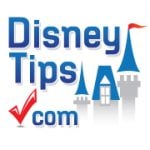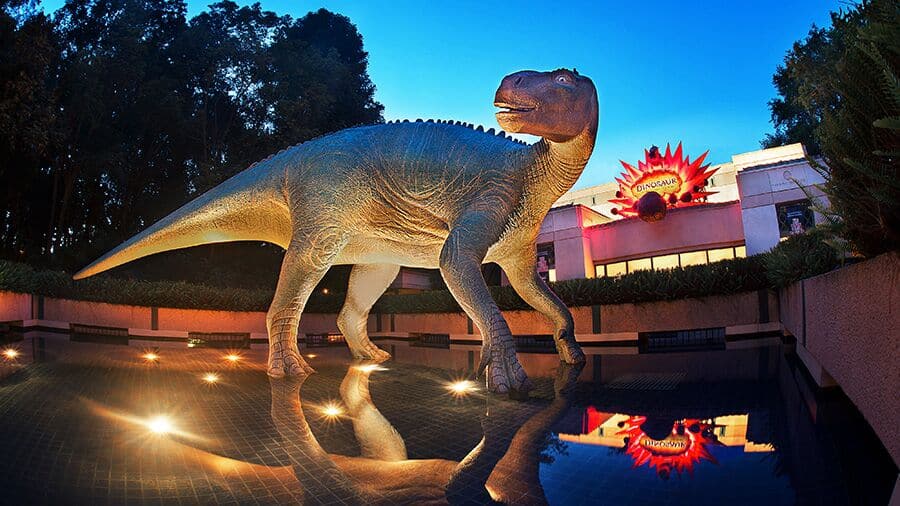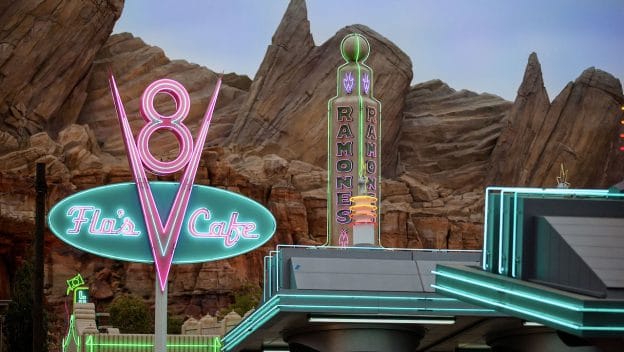
During his presentation at this year’s D23 expo, Disney Parks, Experiences and Products Chairman Josh D’Amaro shared early blue-sky concepts from the Disney Imagineering team focusing on possible replacements for Animal Kingdom’s DinoLand U.S.A.
Though some fans may have been shocked by the reveal that DinoLand was potentially on the chopping block, for others the writing has been on the wall for quite some time now, particularly since the closure of Primeval Whirl in 2020 left the land with just two rides. It’s been a long time since the land’s major attraction, Dinosaur, has received any love in the form of updates or plussing, and for such an expensive ride to attract so few daily visitors inevitably leads to questions regarding whether it remains financially feasible for Park operators to run.
RELATED: 8 Favorite Things Found in Dinoland, U.S.A. at Walt Disney World’s Animal Kingdom
Though the potential closure of DinoLand may seem a tragedy to some fans, others may see it as a cause for celebration. For over twenty years many Disney purists have argued that the Chester and Hester area of the land brought with it the type of carnival/pier-type amusement park offerings that Walt Disney and the original Imagineers had deliberately avoided when creating Disneyland and Walt Disney World.
RELATED: Opinion: Is It Time to Update DinoLand U.S.A.?
However, this closure of a land – and the argument over whether this is something to mourn or to applaud – is hardly the first of its kind. The history of Disney Parks is littered with lands that have closed or been massively refurbished for various reasons. Here are five of them, along with the reasons why they met their demise.
1) Holidayland (Disneyland)
The first land to get the axe from Disney was closed very early in Disneyland’s history. Holidayland, often called Disneyland’s “lost” land, operated for less than five years, from 1957 to 1961.
According to Disney historian Jim Korkis in his book Secret Stories of Extinct Disneyland, “Holidayland was a nine-acre picnic-type area designed as a space that could be rented by corporations or outside groups for an outdoor event. It could accommodate up to 7,000 people and was located just behind where New Orleans Square is today.” It was promoted as, “A recreational park where every day’s a holiday,” with no explicit connection to any particular holiday.
The area featured playgrounds, various sports fields, picnic tables, and a tented stage for performances. Interestingly, it was actually located outside the Disneyland perimeter berm and was considered a distinct event space separate from the Park itself. This allowed for the sale of beer in the land, which was prohibited within Disneyland at the time.
Ultimately, though, this separation was Holidayland’s downfall. Though the land had its own separate gated entrance into Disneyland (through Frontierland), attendees of the events there required a special admission ticket to get into the Park, which they could purchase along with a discounted book of ride tickets.
However, the combination of alcohol with the closeness of Disneyland’s splendors just across a railroad track proved irresistible, and many drunken revelers would try to sneak their way in. Along with the lack of shade, nighttime lighting, and restrooms, these incidents proved enough to make Holidayland more trouble than it was worth, and it was closed in the fall of 1961, eventually to be replaced by backstage facilities (including the show buildings for The Haunted Mansion and Pirates of the Caribbean).
2) Old Tomorrowland (Disneyland / Magic Kingdom)
When Disneyland first opened in 1955, Tomorrowland resembled a World’s Fair more than it did an amusement park. It served as a locale for Disney’s corporate sponsors and partners to showcase the latest in cutting-edge technology, along with predictions of the kinds of goods and services they might provide in the near future. Its focus was more on real-life science facts and pedagogy than it was on the type of science fiction it’s known for today.
A decade later, this vision of the immediate future had already grown stale, and Walt knew that Tomorrowland was in need of an update. In 1967, the area was completely rebuilt, adding major attractions such as the Carousel of Progress, Adventure Thru Inner Space, the PeopleMover, and Flight to the Moon (later to become Mission to Mars when traveling to the moon became part of history rather than the future).
Over time, this version of Tomorrowland also grew dated, and another “New Tomorrowland” opened in 1998, inspired by the retro-futuristic, Jules Verne style of Disneyland Paris’ Discoveryland. This was more of an aesthetic makeover than the 1967 update was, with only one new attraction – the Rocket Rods, a high-speed thrill ride on the former PeopleMover tracks that rarely functioned and was shut down after only two years. Though there have been changes, updates, and replacements to many individual attractions since then, this is generally the version of Tomorrowland currently seen at Disneyland.
Similar to its California cousin, the Magic Kingdom’s Tomorrowland also underwent a redo in the 90s, a few years before Disneyland’s version did – this retro-futurist, science fiction “New Tomorrowland” opened in 1994.
3) Mickey’s Birthdayland / Mickey’s Starland / Mickey’s Toontown Fair (Magic Kingdom)
1988 saw Mickey Mouse’s 60th birthday, and in celebration of this milestone, Disney executives Michael Eisner and Frank Wells greenlit a special temporary addition to the Magic Kingdom, known as Mickey’s Birthdayland, to be located on a backstage area near Fantasyland. A circus theme was employed to create an air of celebration, and a new stop was added to the Walt Disney World Railroad to bring eager Guests (especially the little ones!) directly to see Mickey Mouse in this era before permanent character locations became the norm.
The main attraction in Mickey’s Birthdayland was the Birthday Party Tent, where, according to Jim Korkis (in Secret Stories of Extinct Walt Disney World), “After watching Disney cartoons in the pre-show area, Guests could see a live character show called Minnie’s Surprise Party . . . After the show, Guests would proceed to Mickey’s dressing room and visit with the birthday boy to get an autograph or photo.”
In addition to the birthday tent, Mickey’s Birthdayland featured a children’s playground, a shrub maze, and two-dimensional flats of various toon-themed buildings. The land proved so popular that, instead of closing after eighteen months as had been the original plan, it remained until 1990, when the birthday theme was removed and it reopened permanently as Mickey’s Starland.
Only six years later, though, Mickey’s Starland was itself closed in order to update the area for Walt Disney World’s 25th anniversary. It reopened as the more elaborate Mickey’s Toontown Fair, with multiple attractions including Mickey and Minnie’s houses, Donald Duck’s boat, and Goofy’s Barnstormer roller coaster. This, too, closed in 2011 to be replaced by the Storybook Circus expansion to Fantasyland (which kept, but slightly rethemed, the Barnstormer).
4) Most of Disney California Adventure
When Disney California Adventure opened in 2001, the reaction – both critically and in terms of attendance – was underwhelming. The initial concept of DCA had been to embody all of California in a theme park, thus enticing Guests to stay longer in Anaheim rather than visit the rest of the state. To many critics, however, a park themed to contemporary California, located in contemporary California, was a bit redundant. What’s more, its postmodern style – highlighting the Park as a Park, without suspension of disbelief, in order to curtail costs and differentiate it from Disneyland – was out of keeping with increasing favoritism amongst theme park fans for immersive experiences.
To save the Park from failure, from 2007 to 2012 DCA underwent a massive, $1.1 billion redesign and expansion that saw its initial four lands – Sunshine Plaza, Paradise Pier, Hollywood Pictures Backlot, and Golden State – rethemed, renamed, and/or reduced into several smaller lands. Sunshine Plaza is now Buena Vista Street, Paradise Pier became Pixar Pier in 2018, Hollywood Pictures Backlot is simply Hollywood Land, and Golden State was subdivided into several areas. The capstone of this redesign was the opening of the intricately immersive Cars Land in 2012 (on the site of what used to be a parking lot and an original Park attraction, Bountiful Valley Farm).
Based on the soaring attendance numbers, the redesign was a massive hit, and as much as Disney fans are often known to wax poetic about lost attractions and lands, you won’t find many who miss the original DCA.
Especially Superstar Limo.
RELATED: VIDEO: Conversation About Cars Land, Motoring into Nine Years at Disneyland Resort
5) Camp Minnie-Mickey (Animal Kingdom)
Rounding out this list with Animal Kingdom’s first – and thus far only – land to go to that great big theme park in the sky, Camp Minnie-Mickey was an opening day temporary placeholder at Disney’s Animal Kingdom. By the time it closed in 2014, that “temporary” land was old enough to get a driver’s license in the state of Florida.
Because Animal Kingdom went over budget, an entire land called Beastly Kingdom – meant to be home to animals that exist solely in legend and mythology – had to be cut until more revenue was available. Remembering the success of Mickey’s Birthdayland, Michael Eisner insisted that the Imagineers create a similar sort of temporary land for Animal Kingdom.
The result, Camp Minnie-Mickey, was, according to Jim Korkis, “themed to be a rural five-acre summer fishing camp in the woodlands of the Adirondack Mountains in upstate New York where the characters were on vacation. This theme was echoed in the landscape, architecture, and street furniture that provided a homemade feeling.” Attractions included Greeting Trails where Guests could meet various characters, the Festival of the Lion King musical show, and an animal meet-and-greet show called Pocahontas and Her Forest Friends.
After closing in 2014, Camp Minnie-Mickey was replaced by a different version of what its land had originally been intended for, as Pandora – The World of Avatar finally brought wholly fictional creatures (and plant life!) to Animal Kingdom.
RELATED: 7 Secrets About Pandora – World of Avatar at Walt Disney World
Given this history of land closures – and the fantastic, now-classic lands and attractions that took their places – fans of Dinoland U.S.A. can take heart that, even if their favorite part of Animal Kingdom should go extinct, they have new and exciting innovations coming just around the corner!

 DisneyTips.com Your Guide To A Great Disney Vacation
DisneyTips.com Your Guide To A Great Disney Vacation








